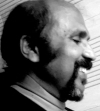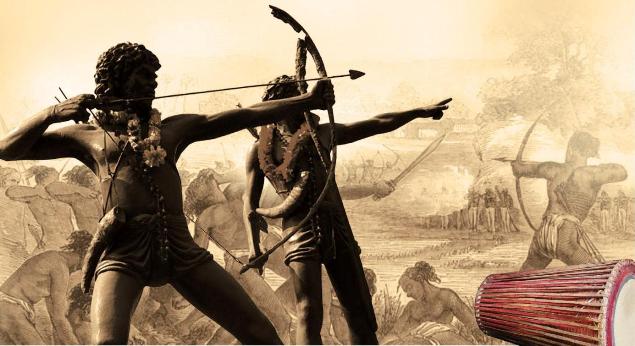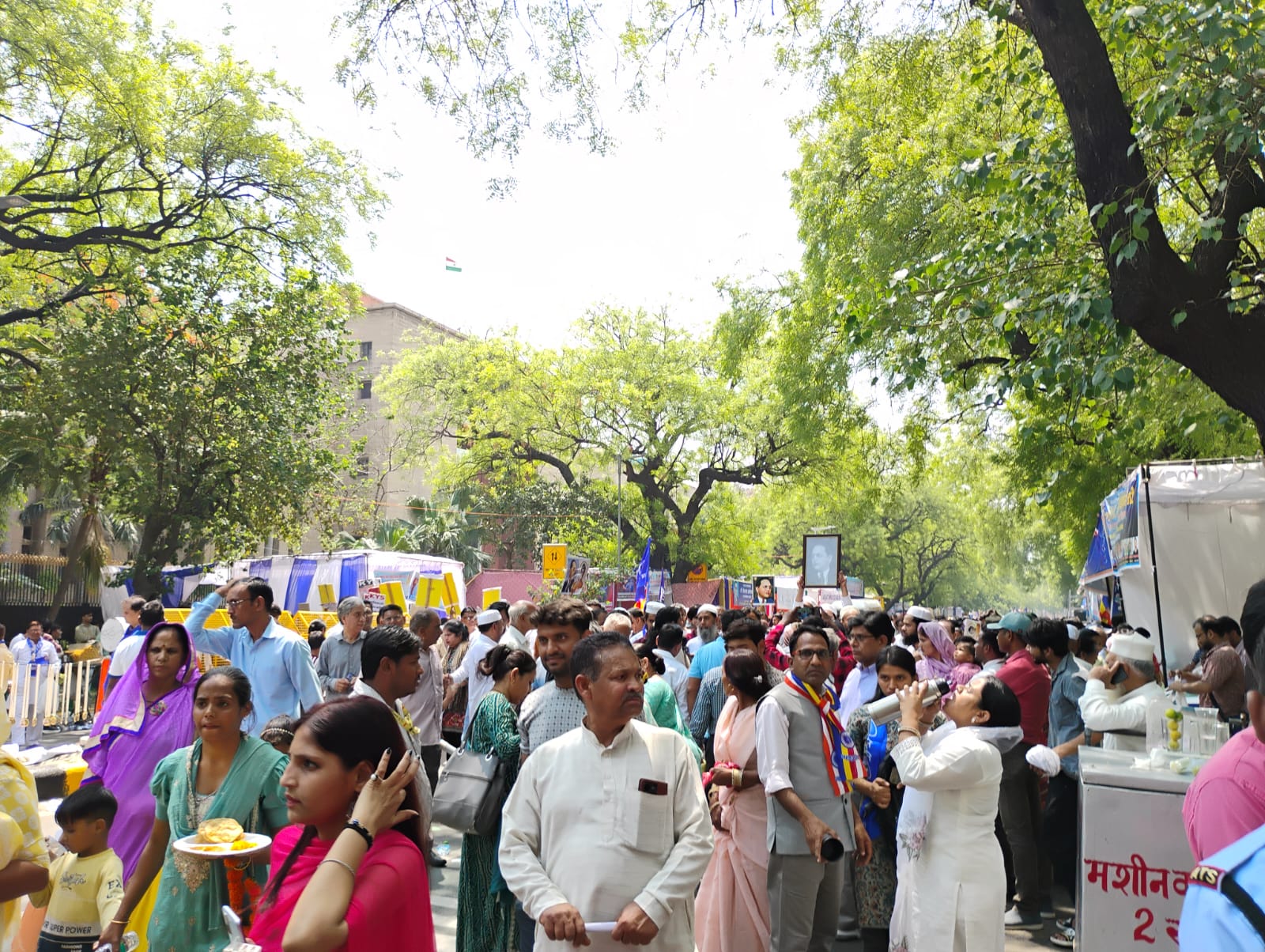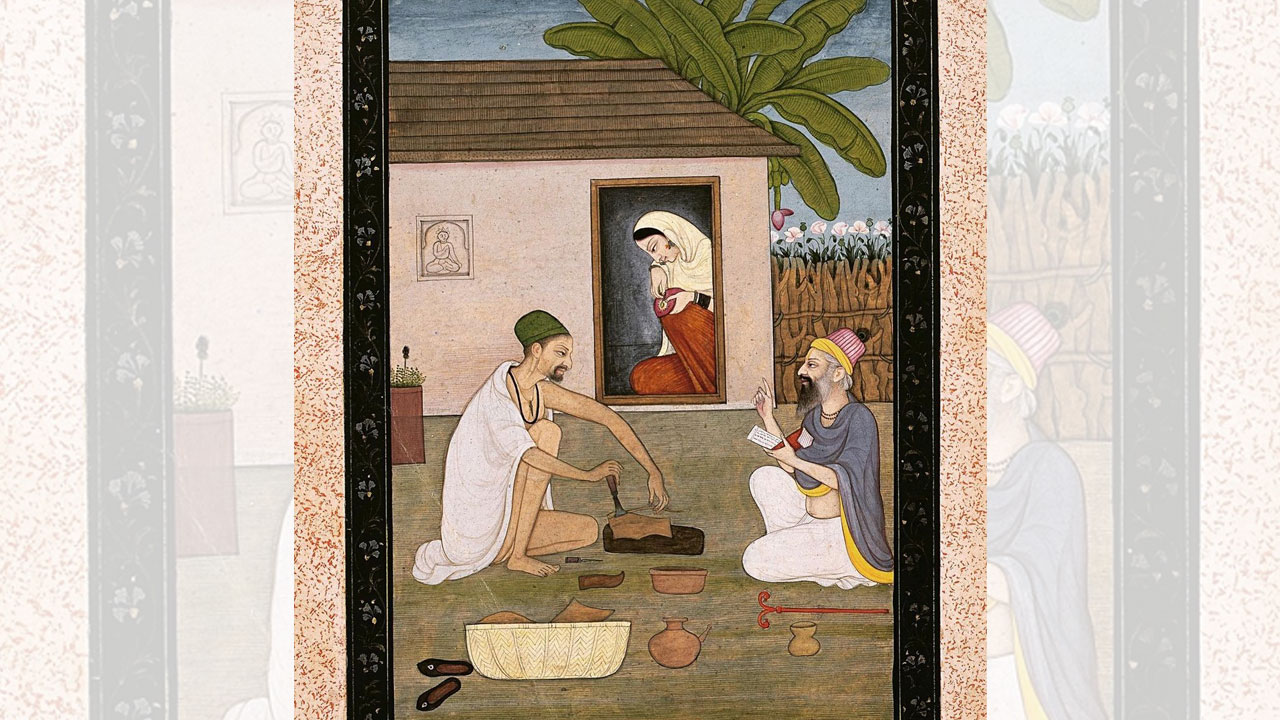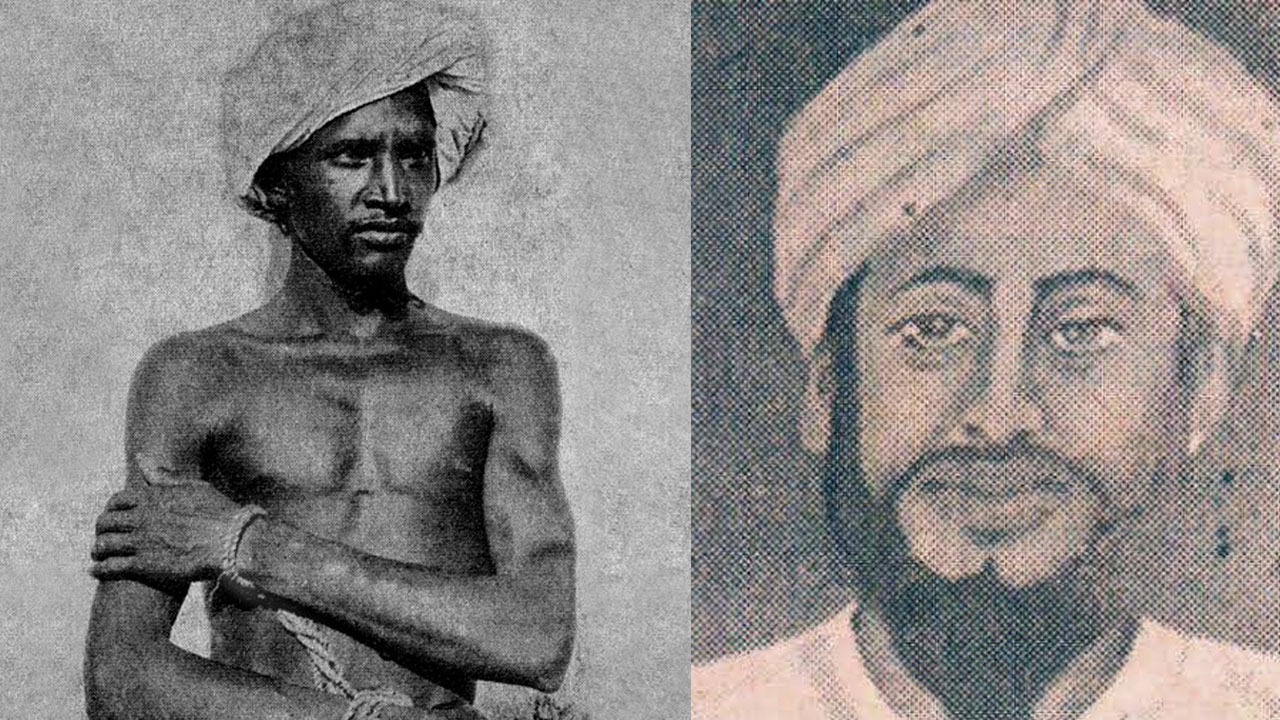On the occasion of the 100th anniversary of the launch of ‘Mooknayak’, we remember the journalist Ambedkar that founded it. His journalism began in 1920 and continued till 1956. The first issue of ‘Mooknayak’ came out on 31 January 1920, while his last newspaper ‘Prabuddha Bharat’ was launched on 4 February 1956.
We will be publishing a series of articles in the run-up to the centenary of the day when Ambedkar’s journalistic journey began. The focus of these articles will be Ambedkar the journalist and the standards, values and ideology of his journalism.
An analysis of Ambedkar’s writings published in ‘Mooknayak’
- Siddharth
It is the centenary of the launch of Mooknayak. The first issue of Mooknayak was published on 31 January 1920. Dr Ambedkar had arrived back in Bombay on 21 August 1917 after completing his studies in the US. The next three years of his life were tumultuous – this is not to say that the rest of his life was smooth.
The period from 1917 to 1920 was marked by one setback and disappointment after another in quick succession. In accordance with the terms of his agreement with the ruler of Baroda, who had sponsored his studies in the US, Ambedkar went to work for him. Ambedkar has recorded a heart-rending account of the humiliation he suffered there in his brief autobiographical work, Waiting for Visa. What came as a relief was his appointment as a professor at Sydenham College, Mumbai, where he took up his new job in November 1918.
However, professorship was not his calling and he didn’t find it satisfying at all. It was the harrowing state of the Untouchables in India and the ways to liberate them that occupied his mind. He went on to appear before the Southborough Committee on Franchise – a part of the Montague Chelmsford Reforms. On behalf of the Untouchables, Karmaveer Shinde and Dr Ambedkar deposed before the committee. In a letter to the editor of Bombay Times, Dr Ambedkar wrote, “Just as Swaraj is the birthright of Brahmins, so it is of the Mahars …” (Keer, 2018). In the same year, Dr Ambedkar got an opportunity to meet Shahuji Maharaj through the good offices of a gentleman called Dattoba Pawar. Shahuji offered financial assistance to him to launch a fortnightly newspaper (ibid). Scholars other than Keer say that in his meeting with Shahuji, Ambedkar presented him with a blueprint for the publication of a newspaper and the former agreed to finance it.
In this context, Vasant Moon, who is a well-known authority on Ambedkar, writes, “Around 1919, Dr Ambedkar came in close contact with the Maharaja of Kolhapur through Dattoba Pawar, a resident of the town. He requested the Maharaja for financial assistance to launch fortnightly Mooknayak” (Moon, 1991). This has also been confirmed by Sheoraj Singh Bechain in his book Do Shabd, a collection of Mooknayak editorials. Mooknayak was launched as an organ of the Dalit movement. As Dr Ambedkar was in the employ of the government, he could not have become its official editor but he was the de facto manager, editor and regular contributor (Dr M.L. Shahare, Dr Nalini Anil, 2014). Ambedkar appointed Pandurang Nandram Bhatkar – a Mahar – as its editor. Though the newspaper did not carry Ambedkar’s name as editor, most of the people were aware that it was the organ of the movement launched by Ambedkar (Keer, 2018). With the publication of Mooknayak, Ambedkar became the hero of the movement of the silenced.
In May 1920, Akhil Bharatiya Bahishkrit Parishad (All India Backward Classes Conference) was convened by Chhatrapati Shahu Maharaj. Dr Ambedkar chaired the meeting. It was evident that besides scholarship, Dr Ambedkar also had leadership qualities. Dr Ambedkar’s was taking the step into public life. Through Mooknayak, Dr Ambedkar provided a glimpse of the great work he intended to do in the times to come (ibid). Many of Dr Ambedkar’s biographers have noted how, despite being a professor, Ambedkar shunned creature comforts. Dhananjay Keer writes, “Though Professor Ambedkar received a handsome amount as salary, he lived in a two-room house in the Improvement Chawl of the Mazdoor Vibhag. He spent money quite prudently. He led a very simple and frugal life” (ibid). Dr Ambedkar wrote almost everything for the first 12 issues of the newspaper (Vasnik, 2019). In the last week of July 1920 Ambedkar left for London to complete his studies. Gyandev Dhruvnath Gholap published seven issues – 13th to 19th (ibid). Publication of the newspaper thus continued even after Ambedkar left for London despite some disputes and unpleasant interruptions. However, after the 19th issue was published and around three years after it was launched, the newspaper closed in April 1923.
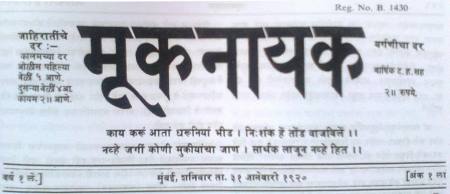
I have selected 12 editorials and 10 articles written by Dr Ambedkar on different occasions to analyze the role and importance of Mooknayak.
A quatrain (translated into English) by Tukaram were the first lines in Mooknayak’s first issue:
“What would I do by harbouring wishes?
Why should I needlessly blow my trumpet?
The world does not hear the voice of the dumb
There is no respect for them; their interests are of no importance. (Bechain, 2019)
Because, as Tukaram said, “The world does not hear the voice of the dumb”, Ambedkar’s idea behind launching Mooknayak was to give voice to the “dumb” Dalits, and within less than seven months of the launch, he could make the voice of the Dalits heard not only in India but also in the rest of the world. When Mooknayak was launched, Gandhi had not only taken over the leadership of the Congress but had emerged as its supreme, unchallenged leader. The demand for Swaraj (self-rule) was gaining ground. Ambedkar, through the columns of Mooknayak, posed a pointed and pertinent query: Swaraj for whom? Would Swaraj also be for the ostracized and the Untouchables? Would it usher in freedom for them, too? Or would Swaraj only mean freedom for the upper castes who had been committing atrocities against the Dalits for ages?
Of the leaders written by Ambedkar in Mooknayak, four had Swaraj as their central theme. But in the other leaders and in the articles, too, he repeatedly referred to Swaraj and what it would mean for the Dalits. As mentioned above, in a letter to the editor of Bombay Times, Ambedkar had written, “Just as Swaraj is the birthright of the Brahmins, so is it of us Mahars also…” ( Keer, 2018).
Also read: Dr Ambedkar’s journalism: From ‘Mooknayak’ to ‘Prabuddha Bharat’
The titles of his four editorials on Swaraj were: “Self-rule’s emphasis is not on good rule”, “The parents of Swaraj” “This is not self-rule but rule over us” and “Our ascent to self-rule: Its evidence and its methods”. The editorials titled “Why are they jittery?” “Muslims did not become Brahmins” and “Will a male buffalo ever give milk?” are about the share of the Dalits in Swaraj. Underlining the need for separate electorate for the ostracized communities, he wrote in one of the editorials, “If true Swaraj is to be established in a country like India marked by casteist discriminations and hostilities, the ostracized people will have to have separate electorate. They would also have to demand due share in political power through separate electorate. The demand for separate electorate is being repudiated by the officials of the higher Varnas on phoney grounds. The ostracized communities have complaints against their impudence. The ostracized classes have seen through the ploy of using political power to forcibly thrust social discrimination and perpetuate it. This is an evidence of the growing awareness among the Untouchables” (Vasnik 2019).
In the editorial titled ‘Self-rule’s emphasis is not on good rule’, referring to Congress’s demand for Swaraj, Ambedkar asks, “Whose Swaraj and for whom? Without understanding this, we cannot comment on the significance of Swaraj. And if someone does, what can we do about that poor man?” (ibid). Analyzing the arguments put forward by those fighting for Swaraj, Ambedkar writes that if Swaraj, that is self-rule or freedom from British rule, is needed for the restoration of the self-respect of the people, then this applies even more so to the 60 million ostracized people. Isn’t freedom from Brahmin rule needed for restoring the self-respect of the ostracized? He has a poser for Swarajists. “What have you done for paving the way for the development of the personalities of the six crore ostracized people? We are forced to ask this question again. This national body (the Congress) can see that the domination and the actions of other people (the British) are making the Hindus feel inferior – but why can’t they see that the domination and the actions of their own people (upper castes) are making the ostracized people the same way?” (ibid). In none of the editorials centred on Swaraj does Dr Ambedkar oppose the Congress’s demand for freedom from the British rule. But he poses three questions: First, are those demanding Swaraj for themselves ready to free the ostracized people from their slavery and grant them Swaraj? Two, separate electorate is needed to ensure that the ostracized get their Swaraj – but are those fighting for Swaraj ready to accept this demand? Three, will the ostracized people get the same rights as others once Swaraj is ushered in?
 Ambedkar wanted these issues resolved before the departure of the British from India. He did not have faith in the Swarajists because their upper-caste leadership wanted to keep the ostracized under their thumb. It is clear from Ambedkar’s views on the demand for Swaraj, as expressed in the editorials of Mooknayak, that he was also fighting for freedom but his freedom struggle was wider and deeper than the freedom struggle of the Swarajists (Congress) – it was not confined to throwing off the British yoke (Omvedt, 2005)
Ambedkar wanted these issues resolved before the departure of the British from India. He did not have faith in the Swarajists because their upper-caste leadership wanted to keep the ostracized under their thumb. It is clear from Ambedkar’s views on the demand for Swaraj, as expressed in the editorials of Mooknayak, that he was also fighting for freedom but his freedom struggle was wider and deeper than the freedom struggle of the Swarajists (Congress) – it was not confined to throwing off the British yoke (Omvedt, 2005)
Dr Ambedkar knew very well that a multipronged battle would have to be fought to secure their rights to the ostracized (Dalits). They would have to demand their rights from both the British rulers and the Swarajists. This would be possible only when the Dalits get educated and organized. This is the underlying theme of almost all the articles and editorials by Dr Ambedkar in Mooknayak and especially in the report on the conventions of Dakshin Maharashtra Bahishkrit Varg Parishad, Mangaon, Kolhapur State on 21-22 March 1920 and of Akhil Bharatiya Bahishkrit Samaj Parishad, Nagpur on 30 May 1920. Mooknayak covered in detail the debates and the discussions at these events. The reasons for the downfall of ostracized communities and the ways of overcoming it were discussed threadbare in these conventions. The latter convention was chaired by Dr Ambedkar. Shahuji, who was also present, greeted Dr Ambedkar, describing him as a friend and also talked about Mooknayak. He said, “My friend Dr Ambedkar has consented to chair this meeting. I should also benefit from hearing his speech and that is why I have come here foregoing my hunting expedition. Mr Ambedkar brings out Mooknayak newspaper and consults all backward communities. I respectfully salute him for this” (ibid).
The participants of the conference concluded: “The condition of the ostracized people has become worrisome because of their birth-based disabilities and impurities. They have been branded as incompetent and impure for centuries and that has made them lose their self-respect and self-esteem. No man can progress without self-respect and self-esteem” (ibid). The participants of the conference cited these adverse circumstances and extended its unanimous support to Dr Ambedkar. “Suggestions have been made for turning the unfavourable circumstances favourable. But for this, we should get political power and caste-wise representation. We won’t get political power without caste-wise representation. ‘Satyamev Jayate’ (Truth alone triumphs) is a hollow dictum. We should continue to fight for the victory of truth” (ibid).
 Dr Ambedkar never hid his commitments and objectives. He declared a number of times in unambiguous terms that his first commitment is to the people who are called Untouchables. He did this both as the editor of Mooknayak and otherwise. In 1939 he said, “Whenever there has been a conflict between my personal interests and the interests of the country as a whole, I have always placed the claim of the country above my own personal claims … But I will also leave no doubt in the minds of the people of this country that I have another loyalty to which I am bound and which I can never forsake. That loyalty is the community of Untouchables, in which I am born, to which I belong, and which I hope I shall never desert” (Ambedkar, 1993). Christophe Jaffrelot writes, “In the first editorial of Mooknayak, Dr Ambedkar wavered between two possibilities. He wondered whether the Untouchables should have their own temples or try to enter the Hindu temples … By the end of the 1920s, he had rejected the logic of Sanskritization and Hinduism. That is not all. He went a step ahead and even rejected the path suggested by the Bhakti tradition” (Christophe Jaffrelot, p 64).
Dr Ambedkar never hid his commitments and objectives. He declared a number of times in unambiguous terms that his first commitment is to the people who are called Untouchables. He did this both as the editor of Mooknayak and otherwise. In 1939 he said, “Whenever there has been a conflict between my personal interests and the interests of the country as a whole, I have always placed the claim of the country above my own personal claims … But I will also leave no doubt in the minds of the people of this country that I have another loyalty to which I am bound and which I can never forsake. That loyalty is the community of Untouchables, in which I am born, to which I belong, and which I hope I shall never desert” (Ambedkar, 1993). Christophe Jaffrelot writes, “In the first editorial of Mooknayak, Dr Ambedkar wavered between two possibilities. He wondered whether the Untouchables should have their own temples or try to enter the Hindu temples … By the end of the 1920s, he had rejected the logic of Sanskritization and Hinduism. That is not all. He went a step ahead and even rejected the path suggested by the Bhakti tradition” (Christophe Jaffrelot, p 64).
To sum up, Ambedkar’s editorship of Mooknayak was a seven-month-long quest for the Dalits’ road to liberation. After serious contemplation, reflection and writing, Ambedkar arrived at the conclusion that the liberation of the ostracized was not possible without the annihilation of caste and without getting a share in political power – and that would be possible only if the community educated itself, sank its mutual differences and got organized.
References
- Rege, Sharmila, Manu ki Vikshipta ke Virudh, Chayan Evam Prastuti, trans Anupama Gupta, The Marginalised Prakashan, 2019
- Ambedkar, B.R., Mooknayak, Trans. Vinay Kumar Vasnik, Samyak Prakashan, 2019
- Babasaheb Dr Ambedkar: Sampoorn Vangmay, Dr Ambedkar Shanti Pratisthan, New Delhi
- Omvedt, Gail, Dr. Ambedkar Prabuddha Bharat ki Aur, Penguin Books, New Delhi, 2005
- Dr Babasaheb Ambedkar: Writings and Speeches, Government of Maharashtra, 1993
- Keer, Dhananjay, Dr Babasaheb Ambedkar Jeevan-Charit, Popular Prakashan, Mumbai 2018
- Moon, Vasant, Dr Babasaheb Ambedkar, National Book Trust, 1991
- Shahare, M.L. and Anil, Nalini, Babasaheb Dr Ambedkar ki Sangarsh-Yatra Evam Sandesh, Samyak Prakashan, New Delhi, 2014
- Ambedkar, B.R., Mooknayak, trans and ed Sheoraj Singh Bechain, Gautam Book Centre, Delhi 2019
- ‘Bahishkrit Bharat’ mein Prakashit Babasaheb Dr Ambedkar ke Sampadkiya, trans Prabhakar Gajbhiye, Samyak Prakashan, New Delhi, 2017
